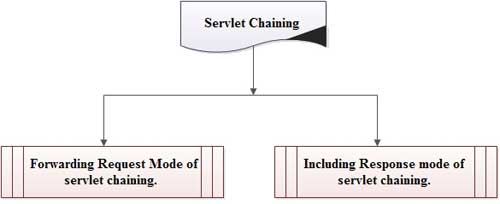• In any mode of servlet chaining, all servlet programs/web resource programs use the same request and response objects. If srvI, srv2, srv3 and srv4 servlet programs are in forwarding request mode of servlet chaining, the html output of srv1, srv and srv3 is discarded and only the output of srv4 servlet program goes to the browser window.
• If srv1, srv2, srv3 and srv4 servlet programs are in including response mode of servlet chaining, the HTML output of all servlet programs together goes to the browser window.
• The source servlet program uses RequestDispatcher object to perform servlet chaining with destination web resource program.

 Dinesh Thakur holds an B.C.A, MCDBA, MCSD certifications. Dinesh authors the hugely popular
Dinesh Thakur holds an B.C.A, MCDBA, MCSD certifications. Dinesh authors the hugely popular